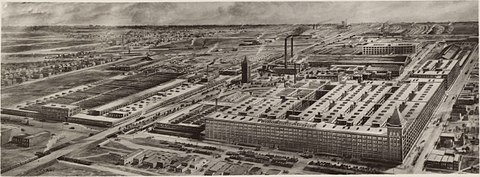Human relations movement
article about human relation
(Redirected from Human relations)
Human relations movement refers to the researchers of organizational development who study the behaviour of people in groups, in particular workplace groups and other related concepts in fields such as industrial and organizational psychology. It originated in the 1930s' Hawthorne studies, which examined the effects of social relations, motivation and employee satisfaction on factory productivity.

| This sociology-related article is a stub. You can help out with Wikiquote by expanding it! |
Quotes
edit- Quotes are arranged alphabetically by author
A - F
edit- The study of human relations in business and the study of the technology of operating are bound up together.
- Attributed to Mary Parker Follett in: Business: The Ultimate Resource, 2001. p. 904.
- It is obvious that the problem of human behavior with which we are dealing can not be understood in terms of psychology or any one of the social sciences alone. Is it not possible, therefore, that in attempting to follow the problem wherever it leads us, and employing whatever concepts and research techniques are relevant, we shall be able to define the problem in such a way and develop concepts and a theoretical framework of such a nature that a major contribution will be made to the foundation for an integrated social and psychological science? Whether or not this result appears possible or attractive to present scholars in these fields, we who are studying industrial relations are forced to work in this direction. It is not a case of choice alone, but of necessity, for we can not get results satisfactory to ourselves and applicable to the solution of practical problems by employing the concepts, theories, and methods of any one science.
- E. Wight Bakke "Industrial Relations Research," Proceedings of the American Philosophical Society, vol. 92, no. 5, p. 379, November, 1948. As cited in: Tannenbaum, Weschler, and Massarik (1961; 8)
G - L
edit- Chester Barnard's works, especially his The Functions of the Executive, exerted an important influence on the human relations movement. He placed great emphasis on informal organizations as well as on the complexity of human motivation, with emphasis on the limited nature of financial incentives.
- George Henderson (1996), Human Relations Issues in Management. p. 27
M - R
edit- Facetiously, someone has remarked that human relations are whatever those interested in human relations study. If one may judge by the divergent approaches of a number of research groups, no single definition is at present possible.
- John W. McConnell "Problems of Method in the Study of Human Relations," Industrial and Labor Relations Review, vol. 3, no. 4, p. 549, July, 1950; As cited in: Tannenbaum, Weschler, and Massarik (1961; 6)
- The Hawthorne researchers became more and more interested in the informal employee groups which tend to form within the formal organisation of the Company, and which are not likely to be represented in the organisation chart. They became interested in the beliefs and creeds which have the effect of making each individual feel an integral part of the group and which make the group appear as a single unit, in the social codes and norms of behaviour by means of which employees automatically work together in a group without any conscious choice as to whether they will or will not co-operate. They studied the important social functions these groups perform for their members, the histories of these informal work groups, how they spontaneously appear, how they tend to perpetuate themselves, multiply, and disappear, how they are in constant jeopardy from technical change, and hence how they tend to resist innovation.
- In particular, they became interested in those groups whose norms and codes of behaviour are at variance with the technical and economic objectives of the Company as a whole. They examined the social conditions under which it is more likely for the employee group to separate itself out in opposition to the remainder of the groups which make up the total organisation. In such phenomena they felt that they had at last arrived at the heart of the problem of effective collaboration, and obtained a new enlightenment of the present industrial scene.
- Fritz Roethlisberger in: Lyndall Fownes Urwick, Edward Franz Leopold Brech (1961), The Making of Scientific Management: The Hawthorne investigations. p. 166-167
S - Z
edit- Human relations today has its iconoclasts and believers, critics and supporters, detractors and zealots. This is not surprising; for during the past twenty years, numerous research groups have burgeoned, and many individual investigators have become most active in the field. There has been a fantastic outpouring of professional and popular books and articles, untold new or revised college and university offerings, a plethora of in-plant training courses, a growing number of training laboratories and seminars, and a seemingly ever-increasing schedule of meetings and speeches—all concerned, in whole or in part, with "human relations."
- Robert Tannenbaum, Irving R. Weschler, and Fred Massarik, Leadership and Organization, New York: McGraw-Hill Book Co., 1961. p. 5
- One of the undesirable by-products of the factory system was the frequent abuse of unskilled workers, including children, who were often subjected to unhealthy working conditions, long hours, and low pay. The appalling conditions spurred a national anti-factory campaign. Led by Mary Parker Follett and Lillian Gilbreth, the campaign gave rise to the “human relations” movement advocating more humane working. Among other things, the human relations movement provided a more complex and realistic understanding of workers as people, instead of merely cogs in a factory machine.
- Jon M. Werner, Randy L. DeSimone (2011), Human Resource Development, p. 7